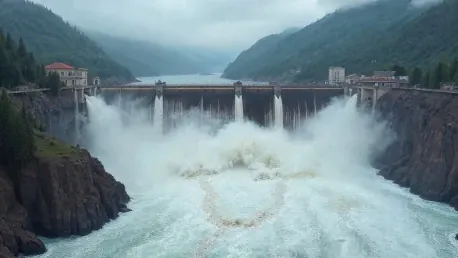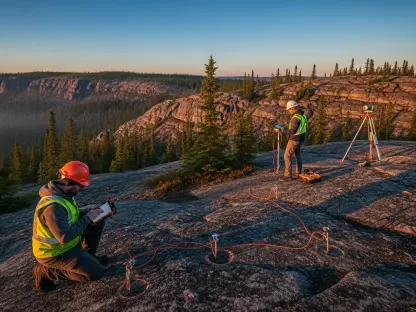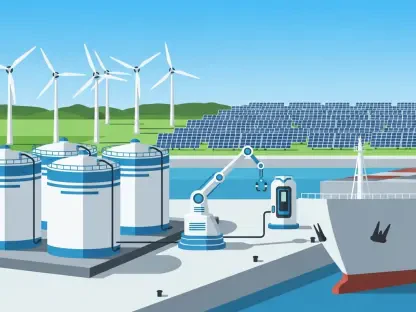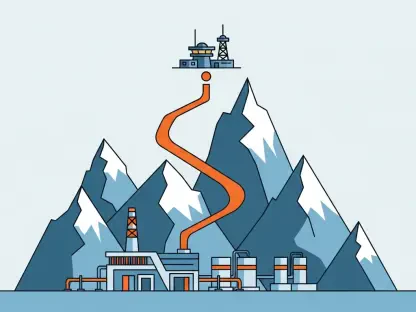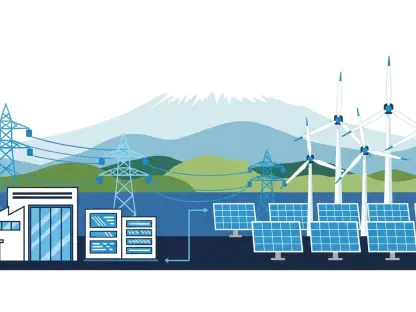The Norwegian parliament’s recent decision to permit the construction of hydropower plants in previously protected rivers has ignited a fierce debate and sparked outrage among environmental groups and conservationists. The decision allows for power plants exceeding 1MW to be established in these protected waterways, provided that the societal benefits are deemed “significant” and the environmental consequences are considered “acceptable.” This bill, which seeks to balance energy needs and environmental protection, has proved to be highly divisive as Norway confronts the pressing challenges posed by climate change and flood management.
Environmental and Societal Concerns
Conservationist Outrage
Environmental groups have strongly opposed the proposal, highlighting the potential harm to Norway’s natural ecosystems, including its diverse fish populations and other wildlife. Truls Gulowsen, head of the Norwegian Society for the Conservation of Nature, voiced his concern over the decision, labeling it as “ill-considered and irresponsible.” Critics argue that the proposal was expedited without sufficient public consultation or thorough environmental impact assessments, raising alarms about the possible long-term damage to nearly 400 protected waterways in the country.
Public opposition has gained momentum, with numerous protests outside the parliament and a petition garnering 25,000 signatures, all demonstrating widespread dissent against the development of hydropower in these sensitive areas. Campaigners argue that rushing into such significant decisions without a comprehensive understanding of their environmental impact risks irreversible damage to Norway’s natural heritage. Moreover, the threat to biodiversity and fish populations raises critical questions about the balance between renewable energy development and ecological preservation.
Complexities and Opposition Arguments
Opponents of the bill contend that the move to open protected rivers for hydropower plants is a step backward in environmental conservation efforts. They point out that, while there may be societal benefits, the potential environmental damage could outweigh these advantages. The interplay between the need for renewable energy sources and the necessity to protect vulnerable natural environments forms the crux of this complex debate. Conservationists are urging the government to seek alternative solutions that do not compromise protected landscapes and ecosystems.
Additionally, there is significant concern over the lack of transparency and public involvement in the decision-making process. Many feel that the government rushed through this proposal without engaging in a thorough consultation process, stoking fears that the potential environmental consequences have not been fully considered. This lack of transparency undermines public trust and suggests that the decision serves political expediency rather than genuine societal benefit. The challenge lies in addressing these concerns while finding a path that serves both energy needs and environmental responsibilities.
Political Dynamics and Energy Debates
Supporters and Political Backing
Conversely, supporters of the proposal argue that critics have exaggerated the environmental risks and maintain that the criteria for approval are stringent enough to safeguard against significant ecological damage. The Conservative, Progress, Labour, and Centre parties back the measure, emphasizing the potential flood-reducing benefits that these projects could provide. This viewpoint suggests that, with careful implementation, the societal benefits, particularly in flood management, could justify the limited environmental impact.
Supporters believe that sustainable development involves balancing various interests and that the proposal provides a framework for weighing societal benefits against potential environmental risks. They argue that flood mitigation is a pressing concern, especially given the increasing frequency and severity of natural disasters linked to climate change. The emphasis on stringent approval criteria is intended to ensure that only projects with demonstrable societal benefits and minimal environmental risks proceed. However, navigating this balance remains a politically and ecologically sensitive endeavor.
Broader Renewable Energy Context
The debate over hydropower in protected areas is part of a broader, contentious discussion about renewable energy in Norway. Political tensions have escalated, particularly regarding onshore wind power projects. A recent refusal to dismantle a wind farm violating the rights of indigenous Sámi reindeer herders drew international attention and criticism, most notably from climate activist Greta Thunberg. According to political scientist Merethe Dotterud Leiren, these incidents illustrate the political challenges in championing renewable energy investments during periods of heightened scrutiny and opposition.
Norway, known for its extensive hydropower infrastructure, faces limited potential for new large-scale hydroelectric projects without encroaching on protected natural environments. Despite its clean energy ambitions, the nation grapples with the dual imperative of expanding renewable energy capacity while preserving its pristine natural landscapes. Against this backdrop, the proposal to open protected rivers for hydropower plants reveals the inherent tension between sustainable energy development and environmental conservation. This dilemma underscores the need for thoughtful, inclusive decision-making processes that prioritize long-term ecological health alongside immediate energy demands.
Future Considerations and Technological Implications
Evaluating Environmental Impact
The Norwegian Water Resources and Energy Directorate (NVE) has previously indicated that the overall power gain from utilizing protected rivers would be minimal unless significant natural interventions are undertaken. NVE director Kjetil Lund has pointed out that major development potential in these waterways is limited without exploiting Norway’s most valuable natural landscapes. This assessment highlights that, while the proposal may offer flood mitigation benefits, the actual energy yield may not justify the environmental costs.
Evaluating the environmental impact of such projects requires a nuanced understanding of ecological dynamics and a commitment to rigorous impact assessments. The challenge for policymakers and environmental advocates is to develop strategies that accommodate both renewable energy goals and the imperative to protect natural habitats. This includes exploring alternative energy solutions that can complement existing hydropower infrastructure without compromising protected areas. Effective management and oversight will be crucial in ensuring that any new developments adhere to high environmental standards.
Balancing Energy Needs and Environmental Protection
The recent decision by Norway’s parliament to allow the construction of hydropower plants in previously protected rivers has triggered a heated debate, causing significant outrage among environmentalists and conservation organizations. The new legislation permits the construction of power plants exceeding 1MW in these waterways, as long as the societal benefits are regarded as “significant” and the environmental impacts are judged “acceptable.” This move aims to strike a balance between meeting energy needs and preserving the environment. However, it has become a highly contentious issue as Norway grapples with the urgent challenges of climate change and flood management. Many argue that the shift compromises the integrity of protected ecosystems, while supporters highlight the necessity of increasing renewable energy sources. Critics worry about potential irreversible damage to the natural habitats, while proponents emphasize the importance of adapting to Norway’s evolving energy demands. The controversy underscores the broader global struggle to find harmony between sustainable development and environmental conservation.
